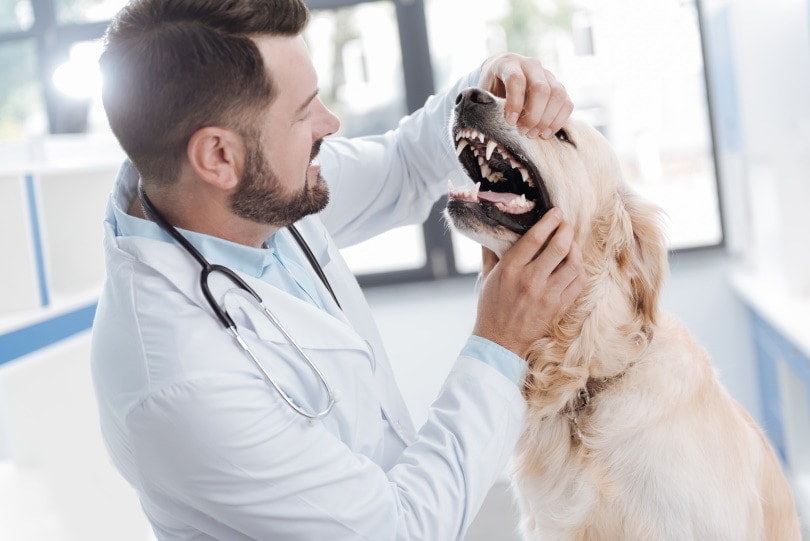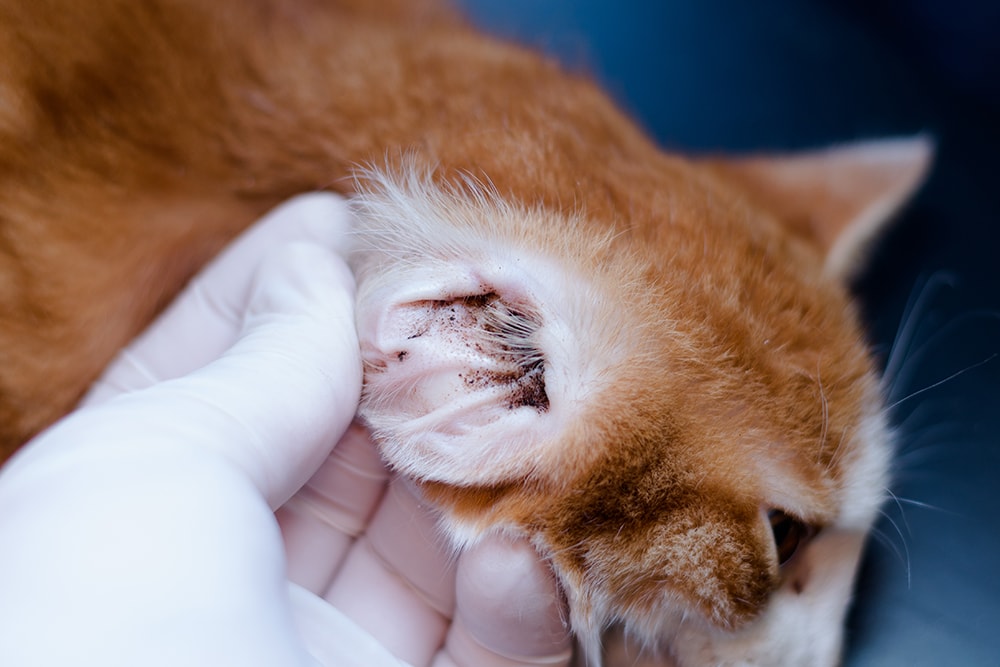Tooth Resorption in Dogs – Signs, Causes, and Treatment (Vet Answer)
Updated on

Click to Skip Ahead
Tooth resorption in dogs is a progressive disease that leads to the destruction of a tooth or, more commonly, multiple teeth. Though commonly considered a disease of cats, as it seems to be encountered more frequently in our feline pets, dogs can also be affected by this disease. It is possible that we underestimate the number of dogs affected by this condition. Indeed, a recent study1 found some degree of tooth resorption was present in roughly half of all dogs that underwent full-mouth X-rays.
This article will dive into tooth resorption in dogs—what it means, what causes it, and what can be done to fix it.
What is Tooth Resorption in Dogs?
Tooth resorption refers to a condition in which the root of the tooth starts to break down and become absorbed into the bone that houses it. This is a progressive condition, meaning it gets worse over time.
Here, it helps to understand some dental anatomy. A dog’s tooth sits within a pocket of bone in the jaw. The crown of the tooth is the part above the gum line, which can be seen with the naked eye. The root of the tooth sits below the gum line, and can only be seen with X-rays. Deep within the tooth, there are blood vessels and nerves that keep the tooth “alive”. These important structures are surrounded by dentin.
So, why does this matter? Well, usually tooth resorption in dogs affects the root of the tooth. This means that, since the problem is occurring below the gum line, the tooth does not show any outward signs that it is being destroyed or absorbed.

What Are the Signs of Tooth Resorption in Dogs?
As we briefly touched on, there are usually no outward signs of tooth resorption in dogs, as the disease process occurs below the gum line.
When tooth resorption progresses, and involves the blood and nerve supply deep within, the condition is painful. In severe cases, when the crown of the tooth is being destroyed, you might notice fractured or abnormal-looking teeth. While most dogs will eat despite the pain caused by tooth resorption, some dogs show the following signs:
- Drooling more than usual
- Bleeding from the mouth
- Difficulty eating or reluctance to eat
What Are the Causes of Tooth Resorption in Dogs?
Despite numerous studies and abundant theories, the cause of tooth resorption in dogs remains unknown. Some factors that may be responsible include genetics, age, diet, hormones, and infectious diseases, though the vast majority of dogs with tooth resorption have no identifiable cause.
What Are the Treatment Options and How Do I Care for a Dog with Tooth Resorption?

If you have concerns about tooth resorption in your dog or have noticed any changes to their eating habits, it’s best to arrange a visit to a veterinarian. Diagnosis of tooth resorption requires a general anesthetic. This allows the oral cavity (mouth) to be thoroughly examined, the teeth to be probed for pockets, and X-rays to be taken of all the teeth.
Unfortunately, the only current treatment for tooth resorption is removal of the tooth. This is also referred to as tooth extraction. If the root of the tooth is completely reabsorbed into the bone of the jaw, your veterinarian may decide to remove only the crown of the tooth, which sits above the gum line. This is referred to as a crownectomy.
Previous attempts at other treatments, in which the teeth were left in the mouth, did not show good results in the long term due to the progressive nature of this disease.
Frequently Asked Questions:
1. Is Tooth Resorption a Painful Condition?
In the early stages, tooth resorption is not painful. As time goes on, tooth destruction becomes more severe, affecting the nerves of the tooth or causing the tooth to break; this is very painful. The pain caused by this condition is the main reason that the affected teeth should be extracted. Once the affected teeth are removed, the pain is alleviated.
2. Can Tooth Resorption Be Managed Without Tooth Extraction?
In the early stages, when the tooth resorption is noted on X-rays but is relatively mild and not causing any signs of discomfort, your veterinarian may recommend a “watch-and-wait” approach. Repeating X-rays of the teeth to assess the progression of the disease can be very helpful, though it is worth mentioning that affected teeth generally need to be removed at some point in time. Unfortunately, there are no home remedies or natural fixes for tooth resorption.
If extraction of teeth is not possible, or if your dog is not deemed a suitable candidate for a general anesthetic, medical management will be attempted. This involves pain-relief medications, anti-inflammatories, and a softer diet to reduce any pain caused by chewing.
3. Does Removal of Teeth Affect My Dog’s Ability to Eat?
The good news here is that dogs do very well without a few teeth. Commonly affected teeth in dogs are the pre-molars. Even with these teeth extracted, dogs are able to eat food as if nothing had happened. In fact, even with all of their teeth removed, dogs still find a way to eat their food!
Conclusion
Tooth resorption in dogs is a painful condition in which the teeth become destroyed below the gum line and then absorbed into the bony socket that houses them. It is more common in middle-aged or older large-breed dogs, and the cause of the problem has proved very evasive. Many dogs do not show any outward signs of tooth resorption, and the condition is diagnosed using dental X-rays.
Since tooth resorption is painful and progressive, affected teeth are treated by extraction or removal from the mouth. If you have any concerns about your dog’s teeth or would like X-rays to be done to check for the presence of tooth resorption, don’t hesitate to contact your veterinarian.
Featured Image Credit: YAKOBCHUK VIACHESLAV, Shutterstock














